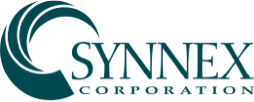As vaccines continue rolling out and we start looking ahead to a post-COVID world, what will that look like for K-12 schools? How will you, as a reseller, offer Microsoft Education devices that empower schools and students to achieve better learning outcomes when there’s still uncertainty and inconsistency about how each school will operate?
Last year, when schools closed suddenly due to the pandemic, there weren’t systems in place to support a remote or blended learning model. It was a scramble to find even the most basic access to online educational tools such as content, devices, and internet.
That hasn’t changed. There’s still a struggle for access to remote education worldwide, including in some areas of the United States. The conversation about empowering learning anywhere is still essential and top of mind.
We’ve identified five key trends that schools will focus on this year. Use these themes to prepare to speak with everyone from IT administrators (see “create simple systems”) to educators (“close the skills gap”).
Truly listen to the person you’re speaking with and hear what they’re saying about their institution’s needs, because the educational system will be especially complex this year. Then use the most appropriate conversation starter below to focus your presentation.
1. Creating simple systems
Both IT teams and teachers will need easy-to-manage technology that keeps students safe and school data secure. Educational leadership will have to ensure that their online systems offer policy, security, and access settings that administrators can apply globally with preconfigured options. A key differentiator for Microsoft Education solutions is a unified, central hub for all of an educator’s various workflows.
What’s more, Microsoft tools not only provide autonomous and flexible solutions for the classroom, they are also valuable for use on the business side of education, such as in food service, maintenance, and operations departments.
2. Equity
As it was last year, equity is still an issue. Students need devices that work consistently, along with uninterrupted access to online educational content. It’s paramount that schools choose devices and solutions that provide good connectivity and accessibility.
In addition, even schools that had grants or other funds available last year to help manage the sudden switch to remote learning now need to consider device longevity. Devices don’t last as long as textbooks, so schools will need a plan for upgrading them in the future.
3. Three instruction models
Schools will need technology that can support three ways to instruct students. Remote, of course, means schooling is 100% online. A hybrid learning experience, which can have different definitions but often means some students are in the classroom while others are online, has different technological needs.
Blended learning, on the other hand, is about enriching the learning experiernce with digital content whether students are at home or at school.
Schools and teachers will look for tools that help relieve the burden of managing extended classrooms, whichever form that takes. A newer example of this is presentation coach, which uses artificial intelligence to help students prepare in advance of giving a presentation and supports both teachers and students.
4. Community, collaboration, and partnerships
However schools choose to operate in the fall, they’ll need support, advice, and guidance around best practices for three different educational models. They’ll need to explore remote, hybrid, and blended methods of providing professional development for teachers, too.
Community resources to help with social and emotional needs, such as mental health services for staff and students, will be significant and can be supported through Microsoft Teams.
Microsoft supports schools even beyond its own platforms by bringing in partnerships with other learning management systems, such as Canvas and Schoology, and uniting them in one place using Microsoft Teams.
5. Closing the skills gap
There’s concern about achievement gaps in some areas because last year’s remote learning led to inconsistencies and differences between different districts. Huge learning losses amplified the gaps in skills that already existed in some areas.
Some users report that Microsoft’s accessibility tools, such as live caption translation and Immersive Reader, are game changers because they help both with the learning process and to close the skills gap.
Every institution faces different challenges as they prepare for the new school year—listen to what customers tell you, and you’ll know which Microsoft products they need. You’ll be able to respond with the Microsoft solutions that will support them where they are.
Get the resources you need to support your education customers
Get more details on how you can help customers shape the future at our Education Resource Hub, or contact us with questions at [email protected].


